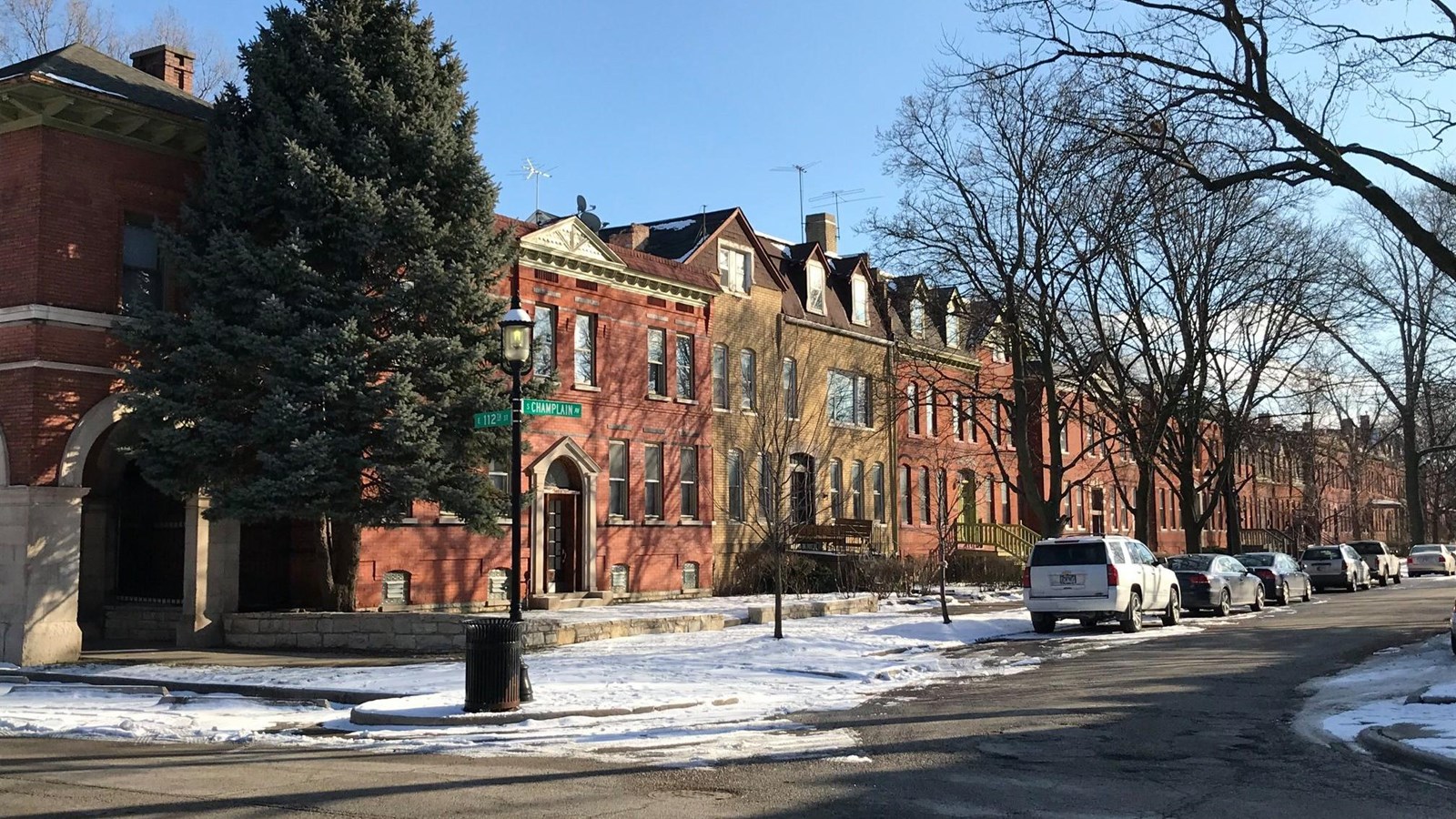Last updated: January 8, 2023
Place
Historic Pullman Workers' Homes

NPS Photo/Stephanie Schneider.
Quick Facts
Location:
Pullman, Chicago, IL 60628
Significance:
City of Chicago Historic Landmark, National Historic Landmark, National Historical Park
OPEN TO PUBLIC:
No
MANAGED BY:
The original rowhomes of the 1880's Pullman Company Town were various sizes and designed to accommodate workers of all levels. The rowhomes were rented to residents by the company, and boasted unique amenities such as indoor plumbing (flush toilets), well-ventilated and well-lit rooms, and steam heating for the the executive homes.
George M. Pullman hired architect Solon Beman to design the buildings of the town of Pullman. Beman's design for Pullman consisted of elements typical of the American Queen Anne style. Although most Queen Anne buildings are made of wood, fire-resistant brick was used instead. In addition, Beman made a special effort to introduce variety and imagination to the facades of the rowhouses, attempting to avoid the monotony typical of industrial housing.
Nathan Barrett, the landscape architect, designed Pullman to resemble a suburban park -- a radical notion for a working-class community. Each rowhome had a small front yard. A variety of trees were planted along the parkways, and the company performed landscape maintenance.
Today, the homes are all privately owned. Protection of the facades went into effect after Pullman was designated a National Historic Landmark District and a City of Chicago Landmark District in the 1970s.
Pullman's most recent designation is as a National Historical Park. The Historic Landmark District and National Historical Park incorporates all homes and buildings 103rd street to 115th (north to south) and S. Cottage Grove Ave to S. Ellis St. (east to west). You can still see a variety of styles here, from executive homes that face the old factory grounds to historic blockhouses that have gone through adaptive reuse to become artist housing.
George M. Pullman hired architect Solon Beman to design the buildings of the town of Pullman. Beman's design for Pullman consisted of elements typical of the American Queen Anne style. Although most Queen Anne buildings are made of wood, fire-resistant brick was used instead. In addition, Beman made a special effort to introduce variety and imagination to the facades of the rowhouses, attempting to avoid the monotony typical of industrial housing.
Nathan Barrett, the landscape architect, designed Pullman to resemble a suburban park -- a radical notion for a working-class community. Each rowhome had a small front yard. A variety of trees were planted along the parkways, and the company performed landscape maintenance.
Today, the homes are all privately owned. Protection of the facades went into effect after Pullman was designated a National Historic Landmark District and a City of Chicago Landmark District in the 1970s.
Pullman's most recent designation is as a National Historical Park. The Historic Landmark District and National Historical Park incorporates all homes and buildings 103rd street to 115th (north to south) and S. Cottage Grove Ave to S. Ellis St. (east to west). You can still see a variety of styles here, from executive homes that face the old factory grounds to historic blockhouses that have gone through adaptive reuse to become artist housing.
